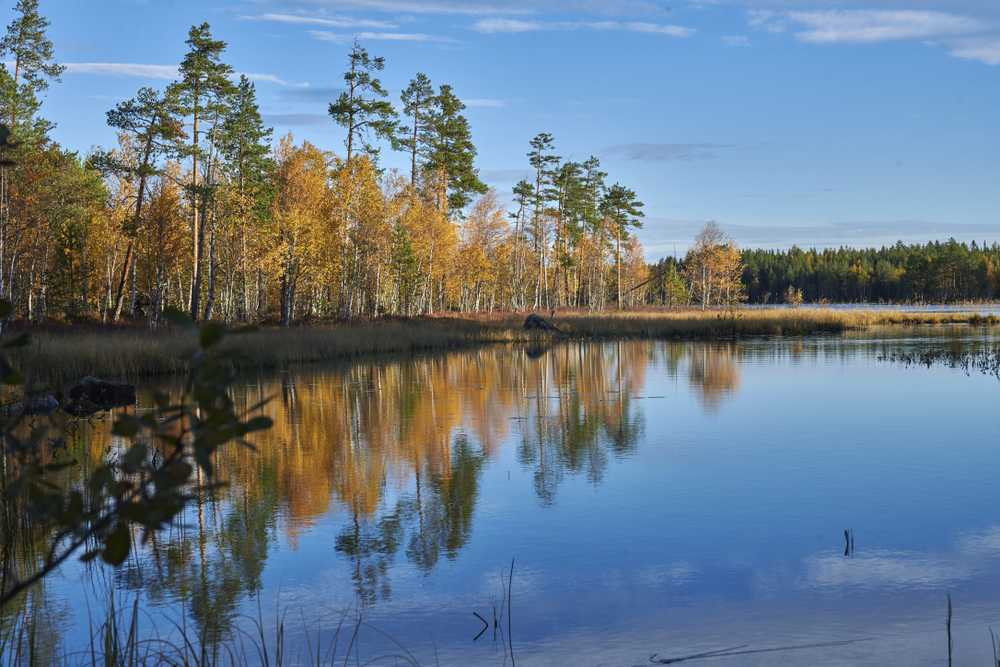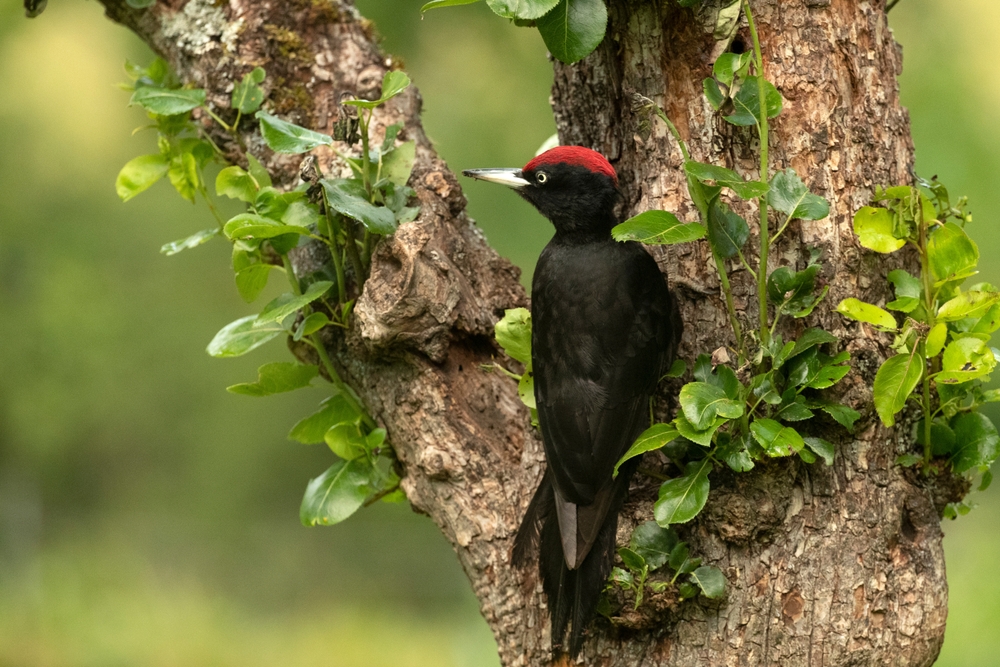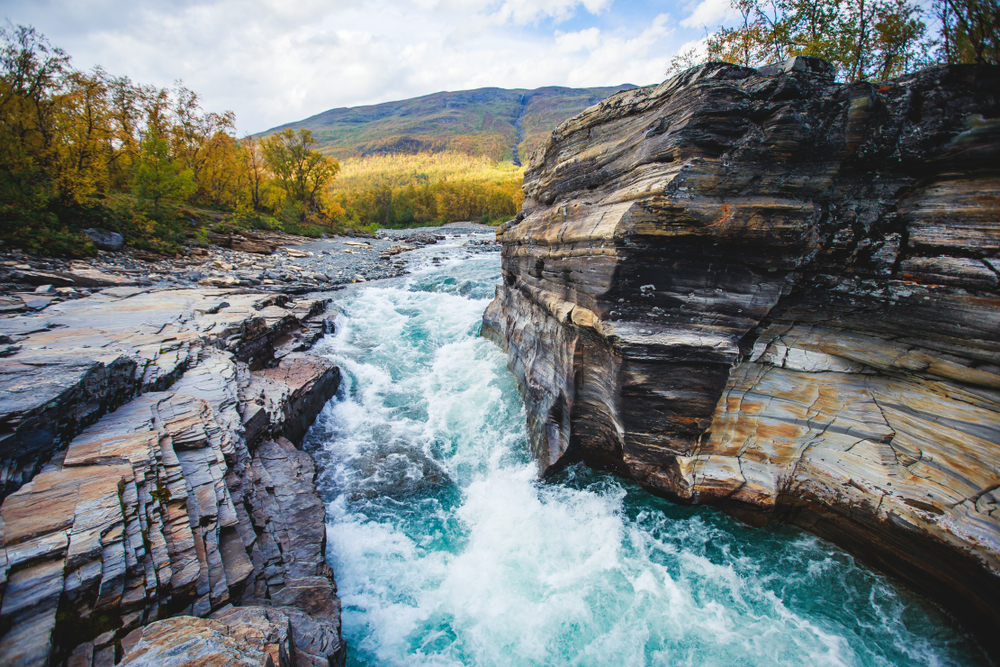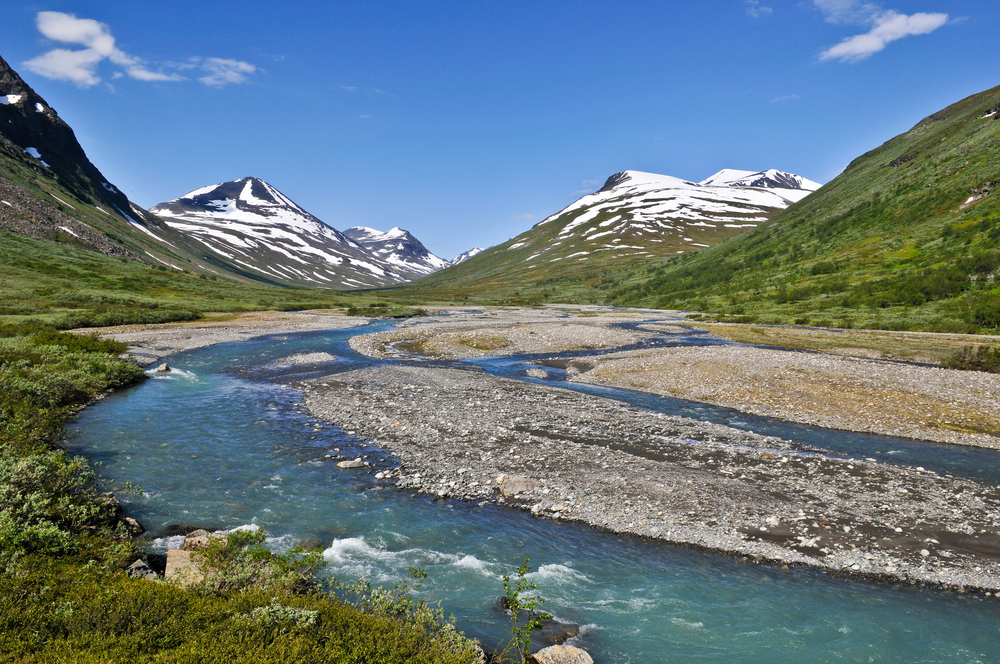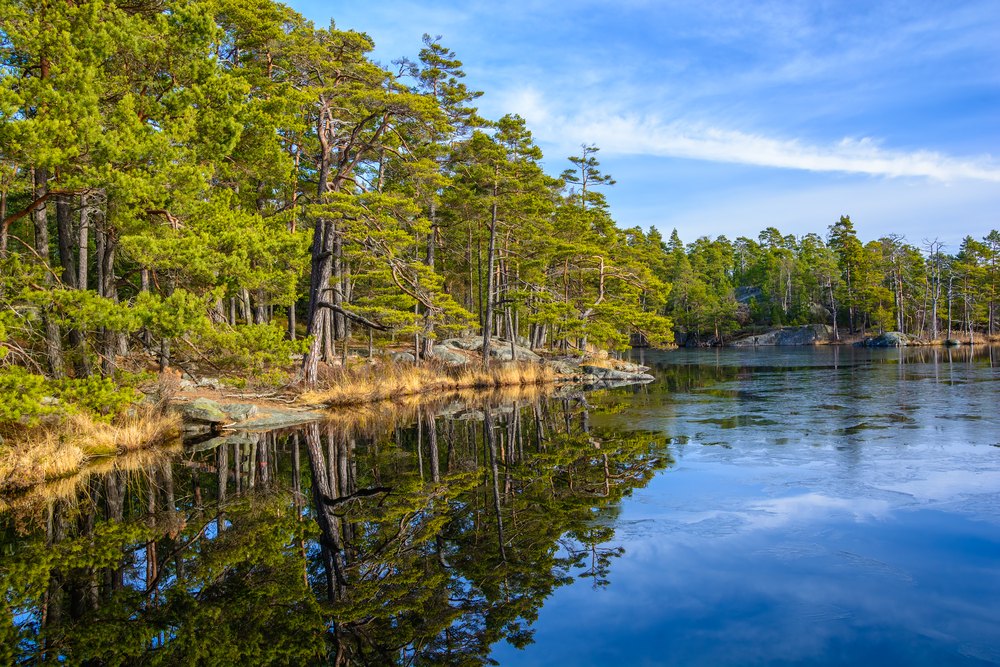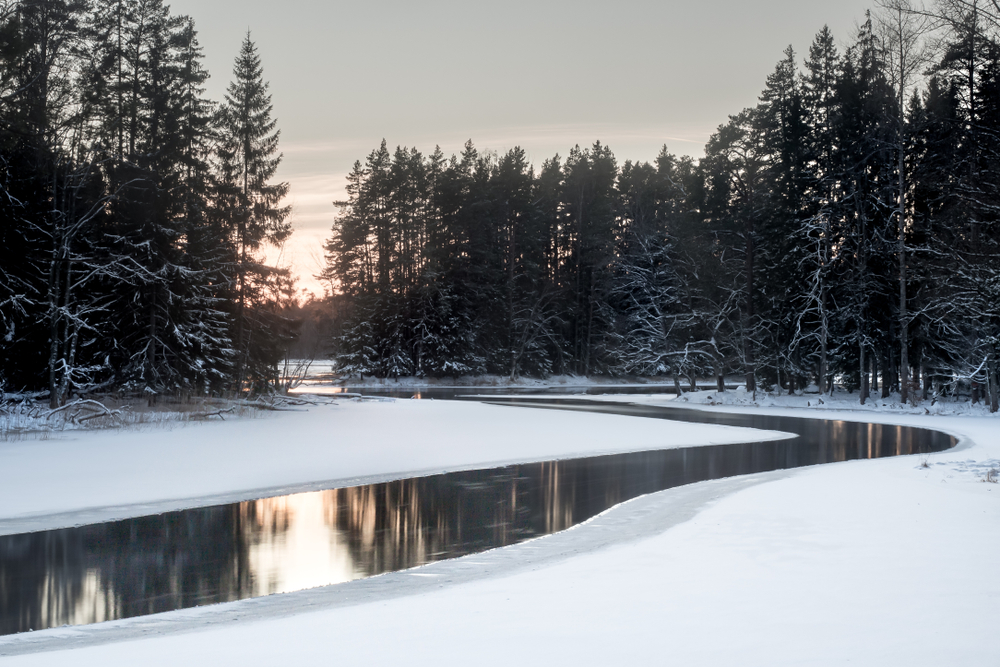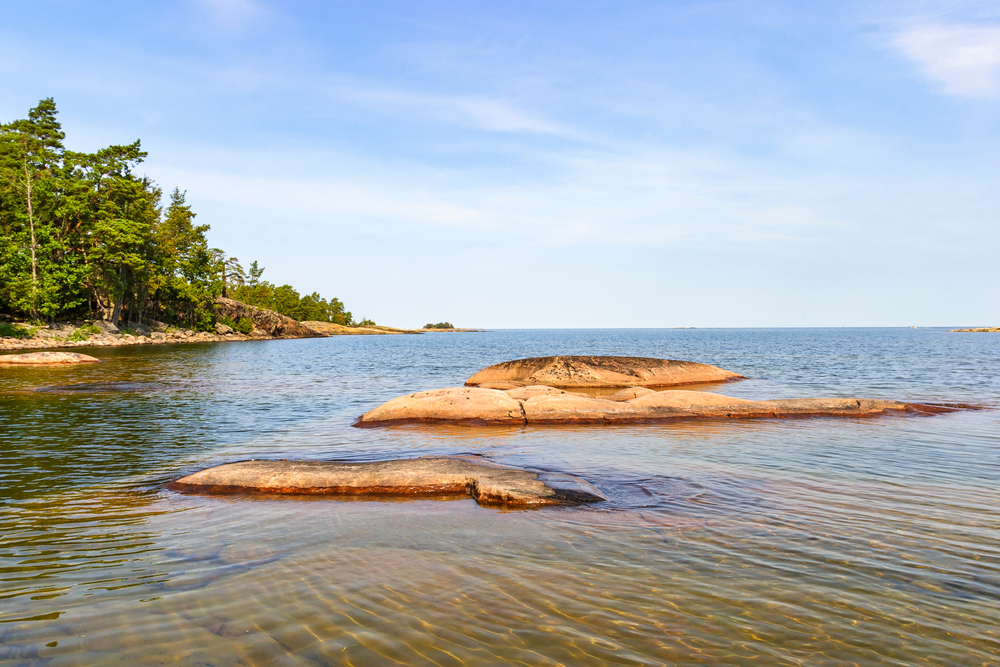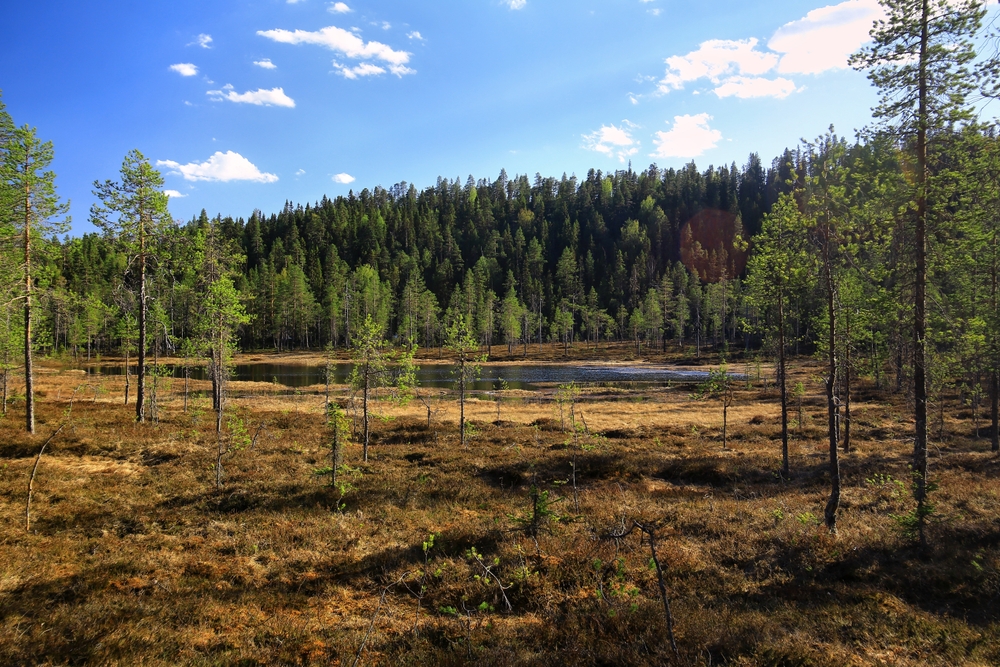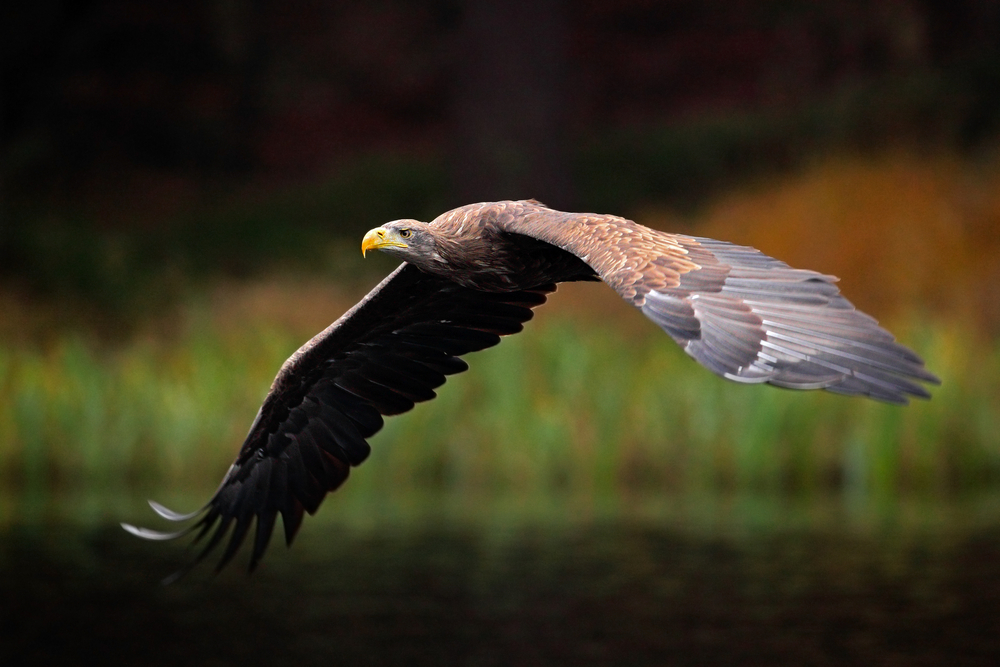Hamra Overview
Hamra National Park, known as Hamra Nationalpark in Swedish, is a protected area in central Sweden that covers approximately 32 square miles (83 square kilometers).
Located in Gävleborg County, it is one of Sweden’s oldest national parks, first established in 1909 and later expanded to protect additional forest and wetland ecosystems. The park is part of the larger Ljusnan River Valley and is characterized by its vast old-growth taiga forests, peat bogs, and meandering streams.
The landscape consists of dense spruce and pine forests interspersed with open mires and small lakes, creating a prime example of Sweden’s boreal wilderness. The terrain is relatively flat, with gentle undulations shaped by glacial activity, and visitors will find themselves immersed in an ancient landscape that has remained largely untouched by modern forestry.
Hamra National Park is notable for its rich biodiversity, particularly its thriving populations of birds and mammals. The park provides habitat for large carnivores such as brown bears, lynx, and wolves, though sightings of these elusive animals are rare. More commonly, visitors may encounter moose grazing among the trees, roe deer darting through the underbrush, or red foxes searching for food in the open areas.
The wetlands and lakes attract a variety of bird species, including cranes, black-throated divers, and whooper swans. The dense forests are home to great grey owls, Siberian jays, and woodpeckers, adding to the park’s appeal for birdwatchers. The park’s diverse ecosystem, with its mix of coniferous forests, wetlands, and open spaces, supports a remarkable range of wildlife that thrives in this undisturbed environment.
One of the park’s most popular features is its pristine and ancient forest, which gives visitors a glimpse into Sweden’s natural heritage before the influence of industrial forestry. The park’s boardwalk trails make it easy to explore the mires without disturbing the delicate ecosystem.
The Svartån River, which runs through the park, is another highlight, offering picturesque views and a sense of tranquility in the midst of the wilderness. The old-growth trees, many of which are several hundred years old, create a mystical atmosphere, particularly in the early morning when mist lingers over the forest floor. In winter, the park transforms into a snowy landscape, offering opportunities for snowshoeing and winter hiking.
Visitors to Hamra National Park can experience the park through well-marked hiking trails, which range from short boardwalk paths to longer loops through the forest. The park’s trails provide an opportunity to observe wildlife, explore the wetlands, and enjoy the peacefulness of Sweden’s boreal forest.
Birdwatching is particularly rewarding in the park, with observation points near the wetlands offering a chance to see cranes and other migratory species. Camping is not permitted within the park itself, but visitors can enjoy picnic areas and designated resting spots. In winter, the park remains accessible for cross-country skiing and snowshoeing, making it a year-round destination for nature lovers.
Conservation efforts in Hamra National Park focus on preserving its ancient forest and wetland ecosystems. The expansion of the park has been a significant success in ensuring that more of Sweden’s boreal forest remains protected from logging and human disturbance.
Management strategies include monitoring wildlife populations and maintaining the delicate balance of the wetland habitats. Challenges include the impacts of climate change, which could alter the delicate hydrology of the park’s mires and affect species distribution.
Despite these challenges, Hamra remains a vital refuge for Sweden’s wildlife and an exceptional example of the country’s natural beauty.








































































